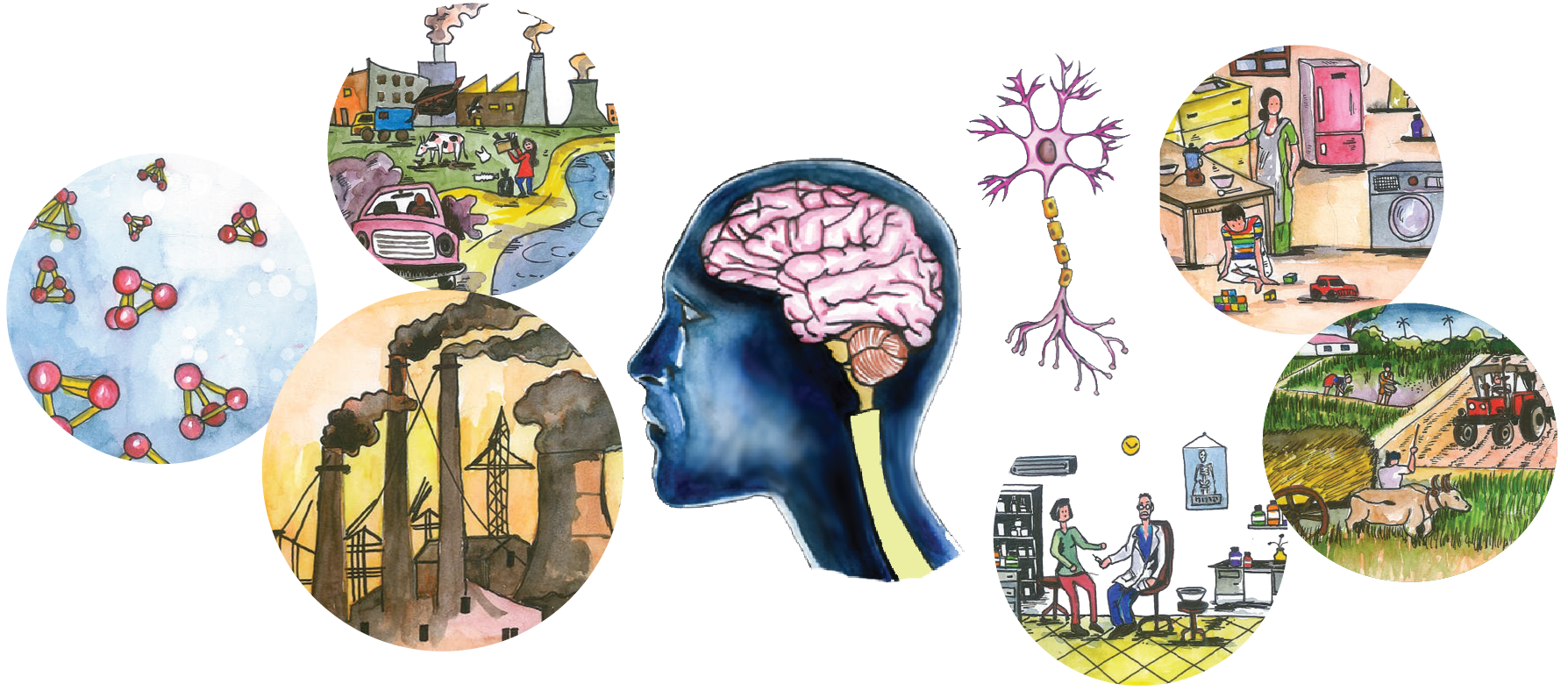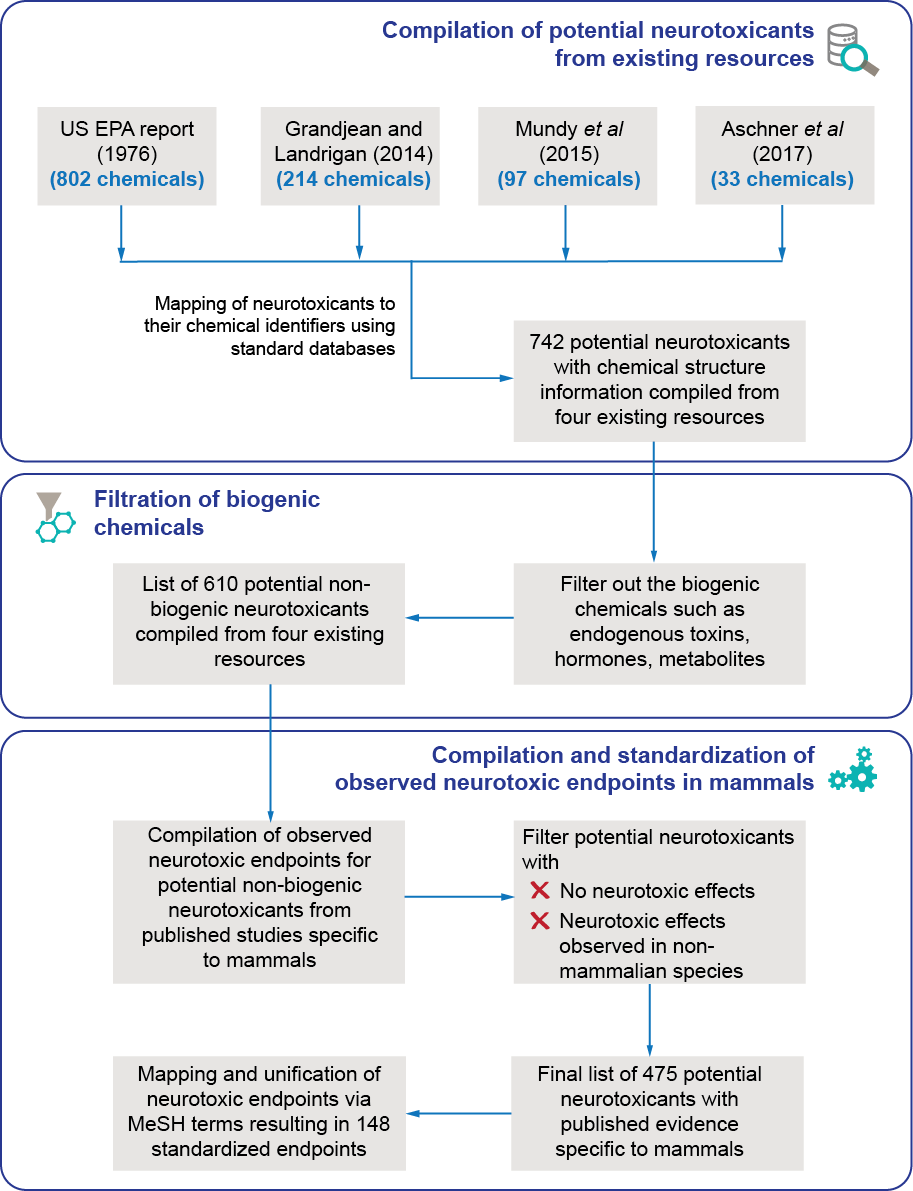
Neurotoxicants are an important class of hazardous chemicals. They are a significant concern due to the kind of damage they can cause in the body. Neurological damage is often irreversible, hence any exposure to potential neurotoxicants is a severe concern. We built NeurotoxKb as a resource to assist in the identification of potential neurotoxicants, compile the data necessary for research and informed policy decisions, and aid in the environmental monitoring of neurotoxicants. We have compiled and curated potential neurotoxicants among environmental chemicals from four well-established lists, namely, US EPA report (1976), Grandjean and Landrigan (2014), Mundy et al (2015), and Aschner et al (2017) on neurotoxicants. The chemicals from these four lists have been filtered based on their experimental evidence for neurotoxicity, the target organism, and the origin of the chemical (biological or xenobiotic).
NeurotoxKb version 1.0 released on 05 January 2021, compiles detailed information on 475 potential neurotoxicants with published evidence of causing neurotoxic effects in mammals. For the 475 neurotoxicants, the toxicological endpoints were compiled and manually curated along with supporting evidence from published scientific studies. The neurotoxic endpoints have been unified and mapped to the standardized MeSH terms and identifiers. Each potential neurotoxicant in NeurotoxKb has been mapped to standard identifiers such as PubChem identifier, CASRN, canonical SMILES, InChI and InChIKey. For each potential neurotoxicant in NeurotoxKb, users can access a variety of chemical information including its molecular formula, 2D and 3D structures, molecular descriptors and their physicochemical properties. NeurotoxKb also contains the predicted ADME properties and predicted toxicity profile for each potential neurotoxicant. The record for each potential neurotoxicant in NeurotoxKb also contains the supporting evidence for neurotoxicity.

along with published evidence of observed neurotoxic endpoints specific to mammals.
On the basis of their environmental source, the potential neurotoxicants have been categorized into 6 broad categories and 41 sub-categories. On the basis of their chemical structure, ClassyFire was used to classify the potential neurotoxicants into Kingdom, Superclass, Class and Subclass. Based on a comparative analysis with chemical lists representing regulations or guidelines, NeurotoxKb lists the potential neurotoxicants found to be present in several publicly available chemical compilations, regulations and guidelines from around the world. NeurotoxKb has further classified the chemical lists representing regulations or guidelines into lists reflecting external exposomes. NeurotoxKb also lists the potential neurotoxicants based on their detection in different human biospecimens.
Users can search the records for potential neurotoxicants based on their chemical name, standard chemical identifiers, or physicochemical properties. Users can browse the record for potential neurotoxicants based on their environmental source, chemical classification, presence in chemical regulation or guideline, or presence in human biospecimen. NeurotoxKb makes the compiled data on neurotoxicants available via an easily accessible and user friendly portal which is optimized for utility in future neurotoxicology research and risk assessment. We believe this knowledgebase will be helpful to the scientific community, regulatory authorities, and the general public alike, in gaining insights into environmental neurotoxicants.
CITATION
If you use our resource, please cite the following research article:Janani Ravichandran#, Bagavathy Shanmugam Karthikeyan#, Palak Singla, S. R. Aparna, Areejit Samal*, NeurotoxKb 1.0: compilation, curation and exploration of a knowledgebase of environmental neurotoxicants specific to mammals, Chemosphere, 278:130387 (2021) .
# Joint-First authors; * Corresponding author.